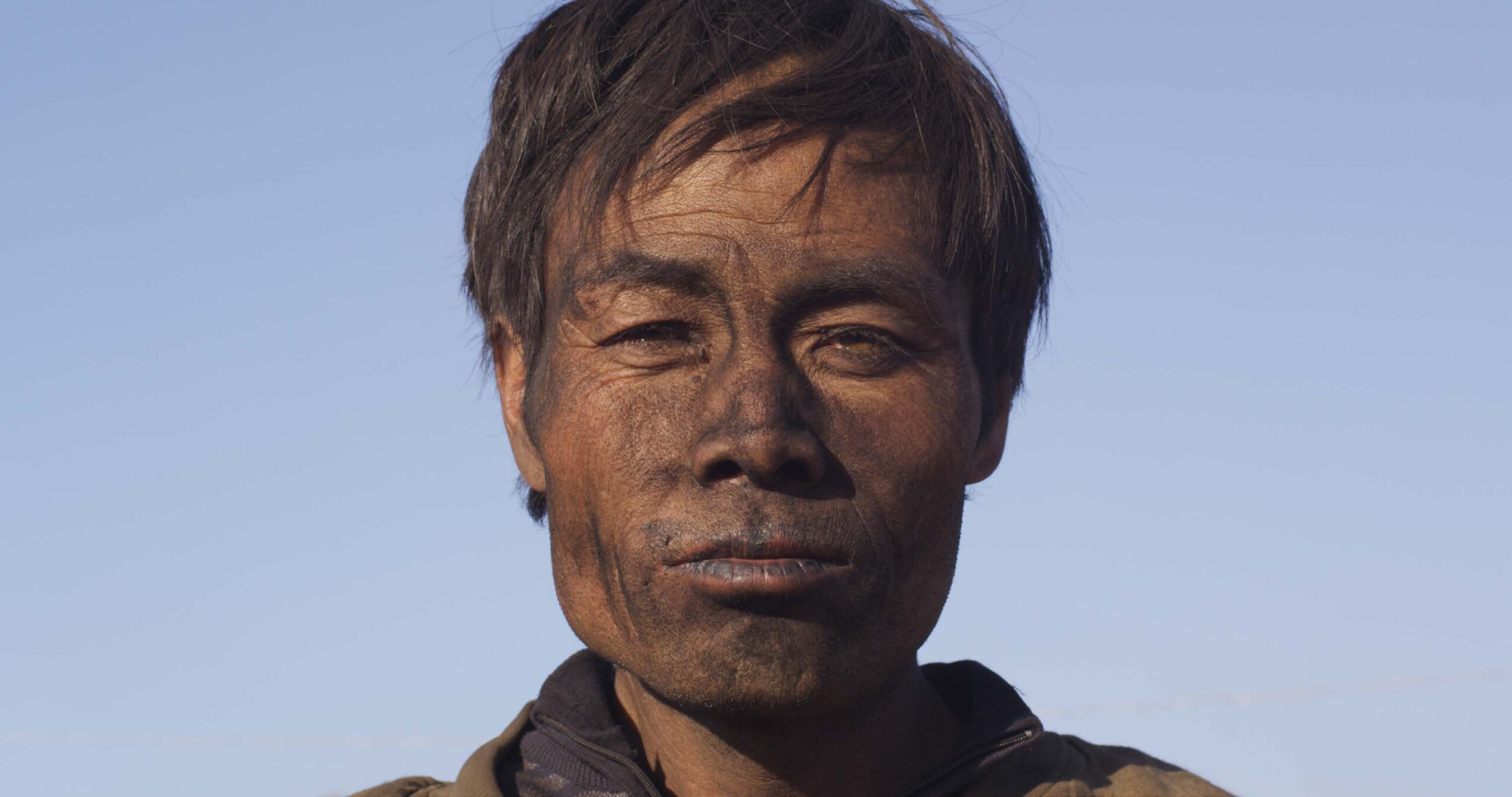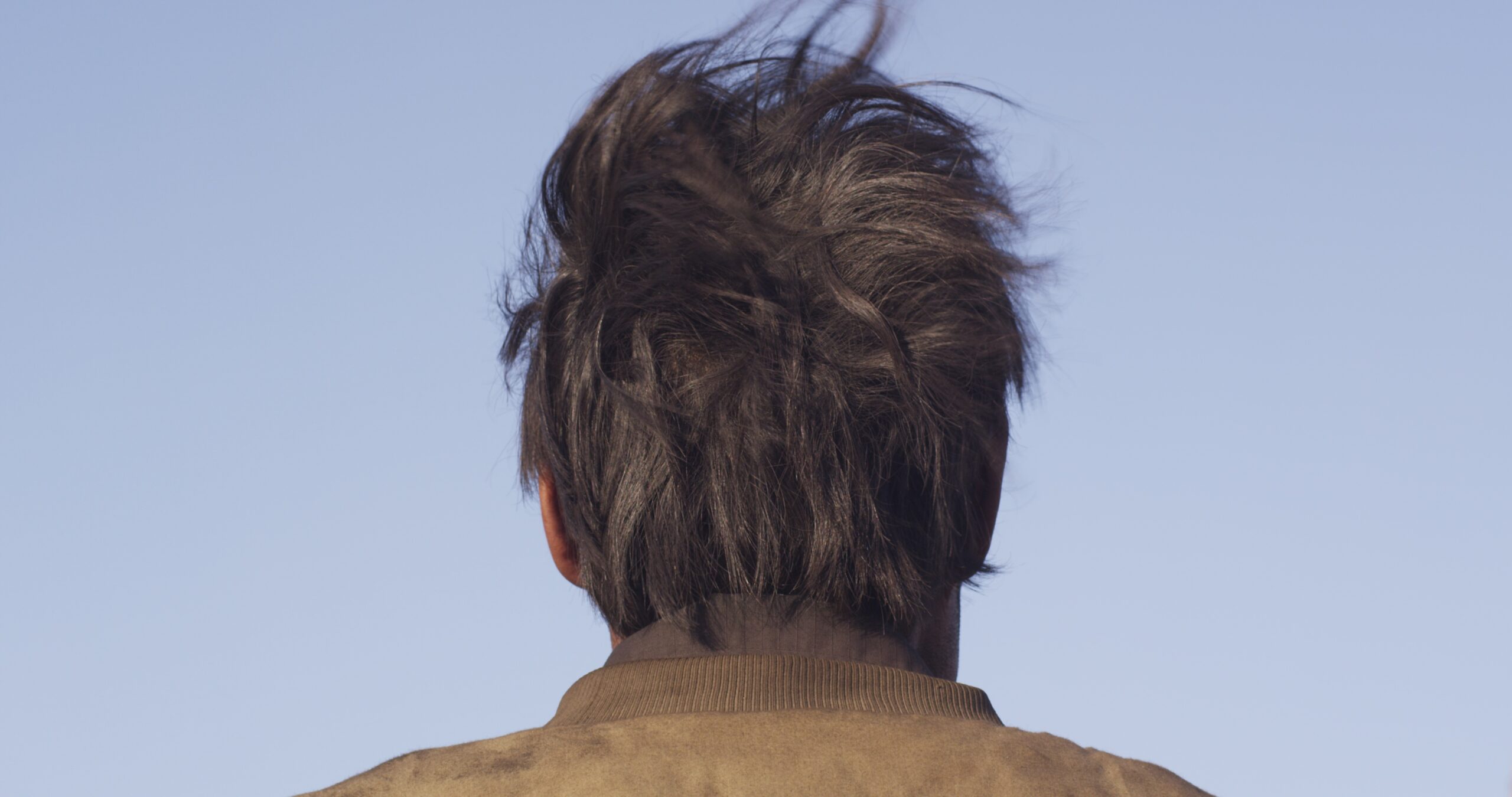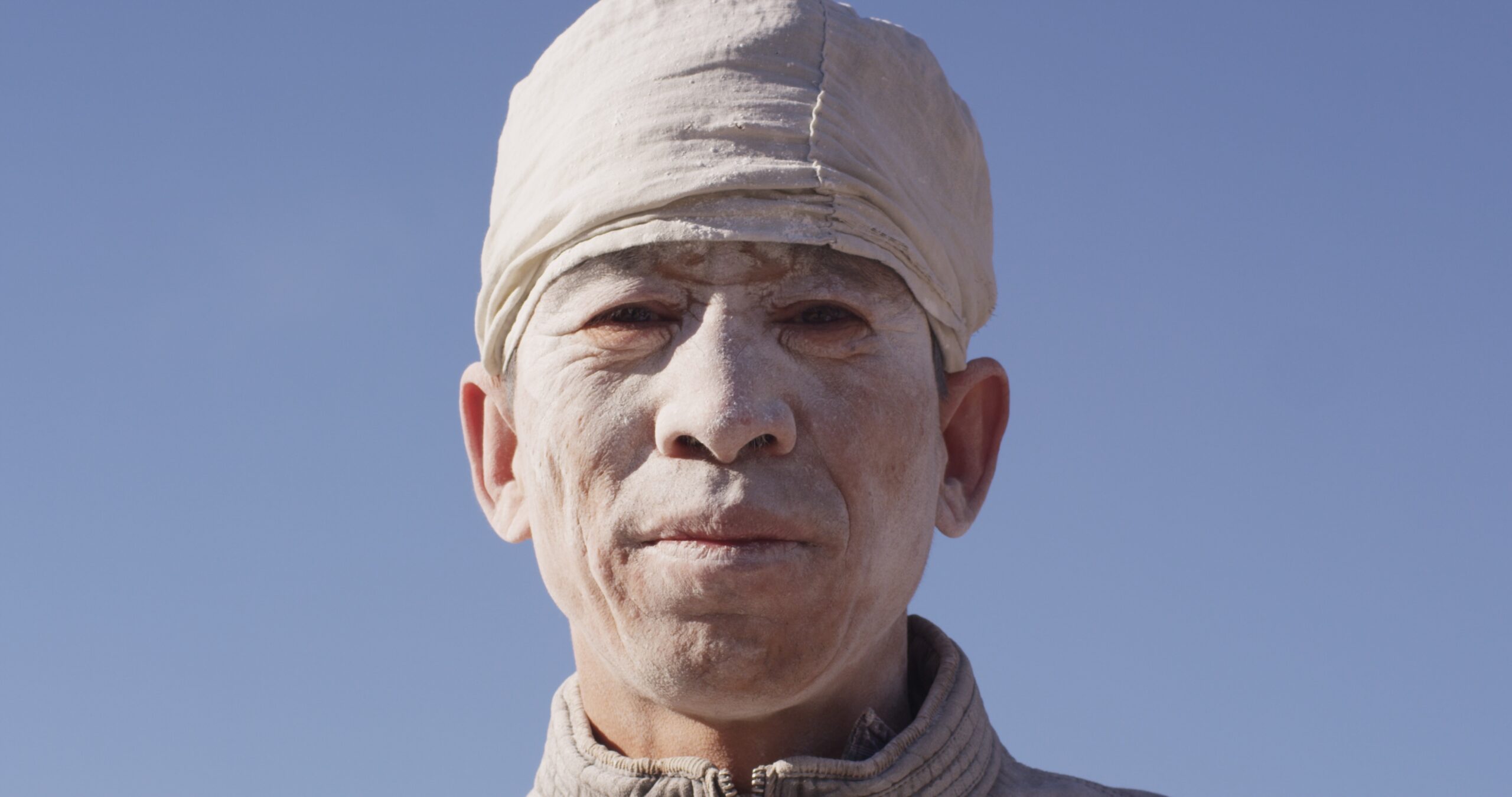Black Face White Face 黑脸白脸 1
As I watched Zhao Liang’s Black Face White Face video installation for the first time, it took surprisingly long for me to realize that I was not observing stills but images in motion.
Three men on three screens engage with the camera so quietly that it almost looks like each figure is actually a photographed portrait. However, flickers of facial movements just below masks of caked coal dust and white lime and an intermittent wind that stirs dusty hair asks for deeper attention to how each screen discloses and conceals a person.
The miners’ dusty faces stand out against the clean blue sky behind them. It is as if the pollutants have become their skin. The coal and lime ash cover every inch, embedding into their wrinkles, carving out their faces, powdering their hair. The uncommunicative back of the head of the central man is as obscure as those facing us.
With every breath they take in, they inhale the toxic dust into their bodies.
There is a rhythmic breathing sound in the background, hard and deep when breathing in, but short and quick during its release. Who is breathing? It feels as though that person is struggling to get enough oxygen. Sounds of the working machines and the blowing wind are also heard in the background.
Two miners stare ahead with no facial expressions, blinking their shaded eyes. What are they looking at? We wait for the third miner to turn around, but he never does.
My vision is overwhelmed as I watch the three miners, waiting for their next movements. But, I am disappointed. My anticipation crumbles to nothing. All of the waiting is in vain. It leads to no answers. At the same time, it makes me more curious about the faces hidden behind this two-dimensional screen.
I also feel slightly relieved. By not being able to see their faces clearly, I am absolved of the responsibility of trying to decipher whatever uncertainties or secrets they may be carrying. Without the covering of dust and minerals, what are their faces like?
And I feel anxious. The long stares and the lack of signs to help identify their moods make me more eager to watch for longer. I want to know what they are thinking about and feeling, what is hidden behind their concealed faces. The longer I stare, the more curious I become, the more my curiosity grows, the more anxious I feel. The longer I stare, the less I know.
Ziwei Cynthia Wang


